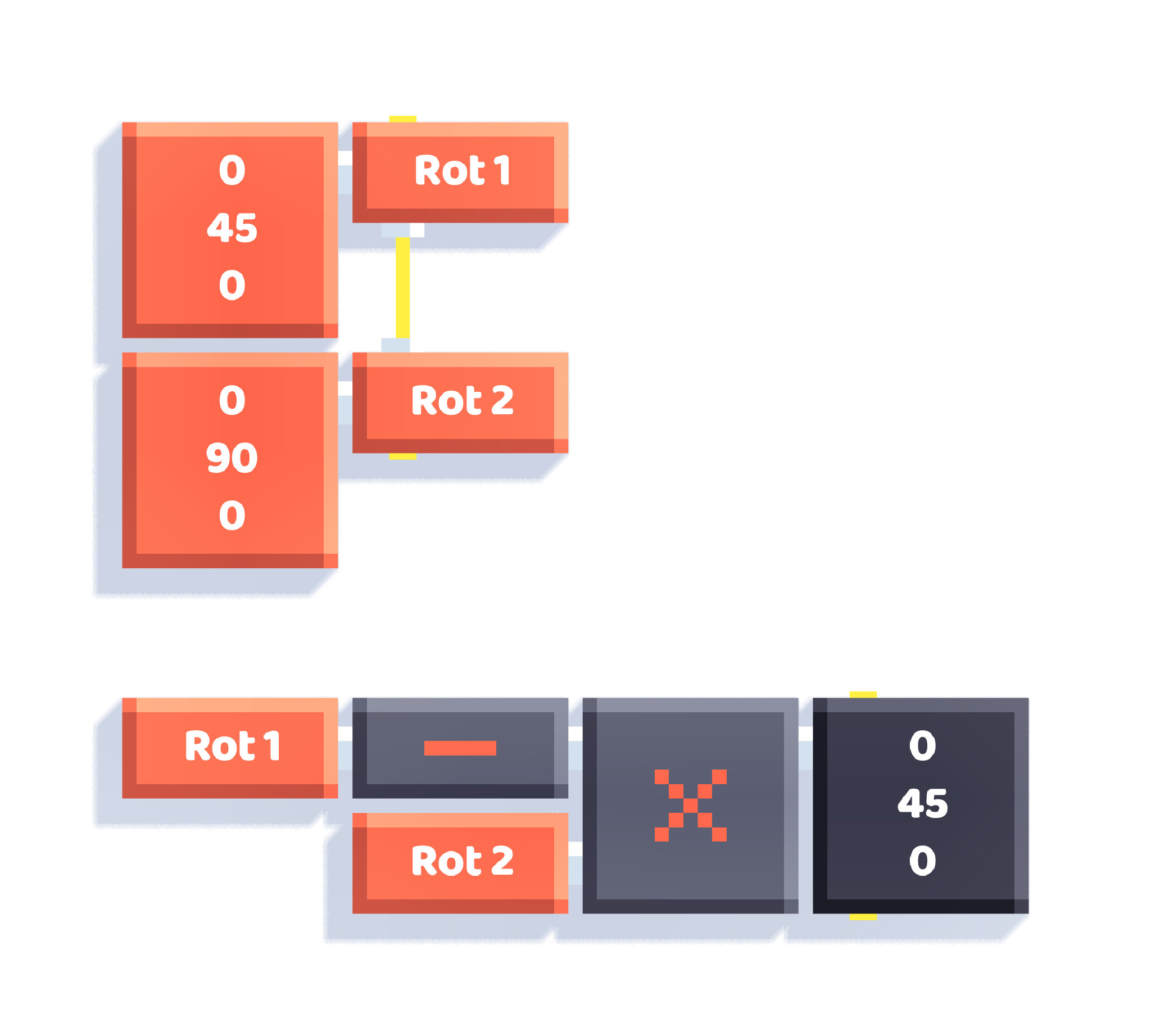Inverse
Outputs the inverse of the input rotation.

Input:
- Rot: rotation value
Output:
- Rot Inverse: the inverse of the rotation
Details
The inverse of a rotation is the rotation that, when combined with the original rotation, equals the identity rotation (0, 0, 0).
In math, the inverse of a value with respect to some operation is the value that "undoes" the operation.
For example, the additive inverse of 5 is -5, since 5 + -5 = 0. If you add 5, then subtract 5, you get back the original value.
The multiplicative inverse of 5 is 1/5, since 5 * 1/5 = 1. If you multiply by 5, then divide by 5, you get back the original value.
The same applies to rotations. The inverse of a rotation can be used to "undo" that rotation. If you combine with a rotation, then combine that with the rotation's inverse, you get back the original rotation.
Normally, the inverse of a rotation on it's own is not useful, and is usually combined with another rotation.
Examples
How to subtract rotations:
